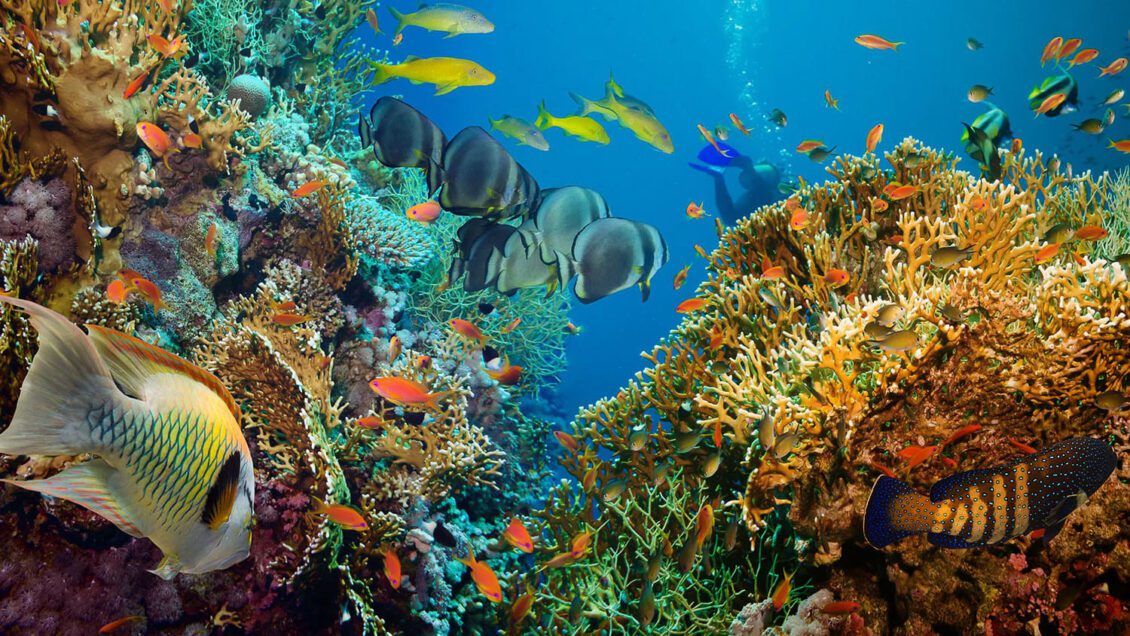Oceans are the lifeblood of our planet. They provide most of the oxygen we breathe and some of the food we eat, and they help control the climate.
World Ocean Day is recognized each year in June.
First proposed by two Canadian organizations at the Earth Summit in Rio de Janeiro in 1992, the day is all about bringing awareness to ocean health and rallying the world to take action to protect it.
An issue as big and as significant as protecting our oceans may feel unreachable for most, but Clemson University marine biologists say there are ways you can help.
The three R’s
The easiest way to care for our oceans is to reduce, reuse and recycle.
An estimated 17.6 billion pounds of plastic leaks into the marine environment from land-based sources every year, according to Oceana, an international organization focused on ocean conservation. That’s equivalent to dumping a garbage truck full of plastic into our oceans every minute.
Reducing your use of plastics and recycling the plastic bottles and other containers you do use will cut down on the amount of plastic that ends up in our ocean.
Alternatives
Another way we can care for our oceans is by conserving energy and seeking out alternative energy sources, such as wind and solar power. Using energy in the form of fossil fuels contributes to climate change and global warming. Those things negatively impact the ocean water and marine life. Marine life and coastal ecosystems are highly sensitive to the changing global temperatures. Individuals can make a difference by reducing the amount of energy they use and supporting alternative energy sources.

“It reduces oxygen availability and stresses marine life,” explained Childress, who has studied how changing ocean environments — including warming temperatures, hurricane disturbance and emergent diseases — impact coral health and reef fish behaviors. He’s also a part of a collaboration of teachers, artists and scientists who created “Something Very Fishy,” a program that teaches elementary students about ocean conservation.
Keeping plastics out of oceans is essential to “prevent death, disease and dislocation of marine life,” says Michael Childress, associate professor in the Department of Biological Sciences. Because of their chemical nature and longevity, plastics are extremely harmful to coastal ecosystems and marine life, he said.
Ride a bike or walk instead of driving a car. Turn off lights and appliances when not in use.
“The sooner we transition away from burning fossil fuels, the better off the ocean will be,” he said.
Education means protection
Protecting our oceans also requires learning about them.

Did you know that there are almost half a billion microbes in a 16-ounce bottle of ocean water?
Professor of Biological Sciences Barbara Campbell explains that while many people think microbes — organisms such as bacteria, archaea, viruses and protozoa — are bad for us, they are essential because “they generate about 50% of the oxygen we breathe.”
Each year, human activities release more carbon dioxide into the atmosphere than natural processes can remove. Carbon dioxide in the atmosphere can be fixed by photosynthetic organisms such as plants. It can also dissolve into the ocean where it gets incorporated into microorganisms and into the food web there.
Without these oceanic microorganisms, balancing the extra carbon dioxide produced in the world becomes more difficult, disrupting the healthy balance needed for oceans and the planet.
Ocean fun facts
• Oceans cover 71% of the Earth’s surface.
• If the salt in the ocean could be removed and spread evenly over the Earth’s land surface, it would form a layer more than 500 feet thick, or roughly the height of a 40-story office building.
• Less than 10% of the world’s ocean, and less than 50% of U.S. waters, have been mapped.
• World Ocean Day focuses on protecting at least 30% of ocean, land and waters by 2030. Currently, less than 17% of land and 8% of the ocean worldwide is protected.
*Data courtesy of U.S. Geological Survey
Get in touch and we will connect you with the author or another expert.
Or email us at news@clemson.edu

